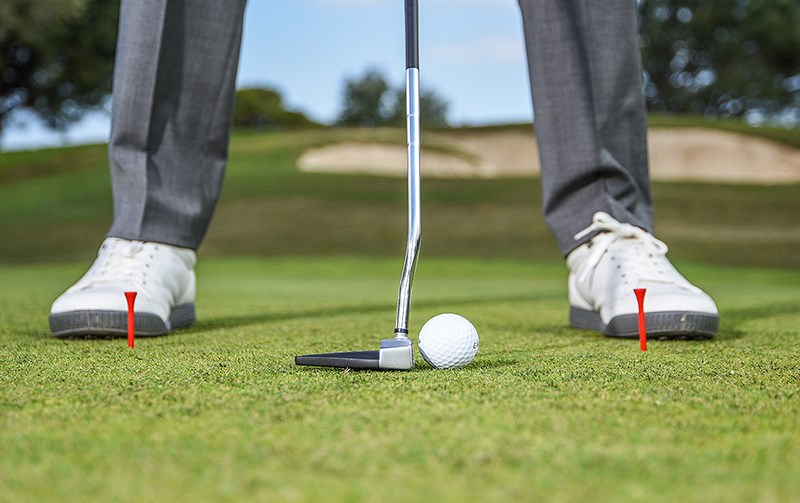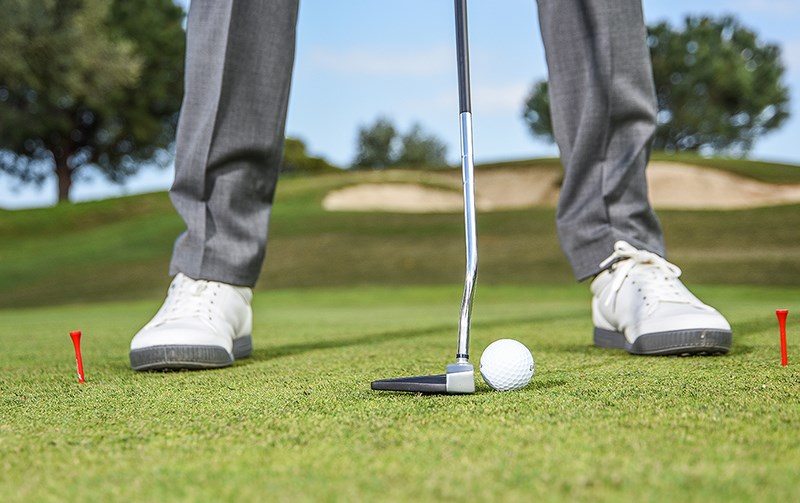A-Z Putting (T): Tempo
Published:
Tempo: Why it matters, and how to groove yours
Tempo has been defined as the total time your stroke takes from start to finish. It often gets confused with rhythm, but as this definition shows, tempo is more about the speed you swing the putter – slower, or faster.
That said, tempo has a direct impact on rhythm. Good tempo evens out back/through swing speeds, promoting a pure swing of the putterhead.
Putting tempo is a matter of personal choice. But here, you’ll learn a simple way to hone a slower or a faster stroke, and discover which of those may be more beneficial to you.
Faster stroke: Keep it short and brisk
Find a level area of the practice green. Set up with the leading edge of the putter central in your stance, putting the ball just forward of centre. Now stick two tees in the ground equidistant from the ball – one opposite the trail instep, one off the lead toe.
Count “1, 2”
Using the tees as a reference for back/ through swing lengths, make a brisk, even-paced stroke. Help this tempo by counting “one” for the end of the backswing, and “two” for the end of the followthrough. This shorter, speedier stroke is often the best solution for golfers who leave putts short, or play on slower greens.

Slower Stroke: Increase the length
Now experiment with a slow tempo. Keep the same set-up and ball position but this time spread out the tee pegs to outside your lead and trail feet. The wider you go, the slower the stroke you need to make. Take care to keep the ball dead in the middle of them.
Count “1,000, 2,000”
As before, use the tees as a reference for backswing and throughswing lengths. But this time, slow down your tempo by counting “1,000” for the backswing and “2,000” for the followthrough. This calmer tempo typically works best on faster surfaces, or for golfers who have a tendency to charge putts past.


